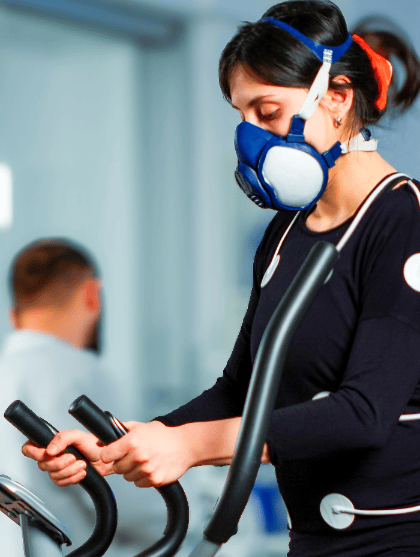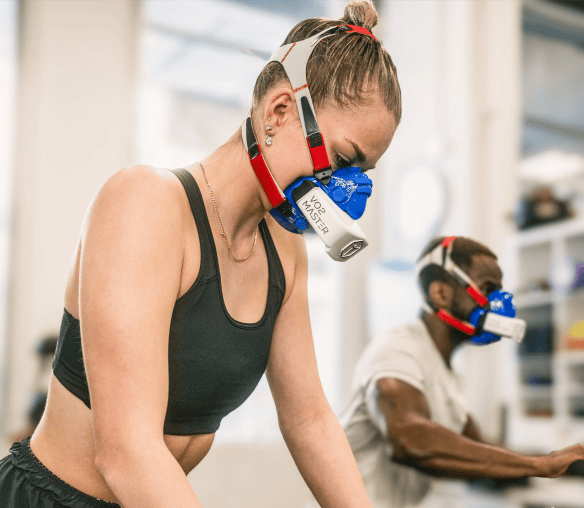
Cardiopulmonary Exercise Test (CPET) for Performance and Longevity
A cardiopulmonary exercise test (CPET) shows how your heart, lungs and muscles react when you exercise, and takes place on a treadmill within the clinic.
A Cardiopulmonary Exercise Test (CPET) is a non-invasive diagnostic procedure that evaluates how well your heart, lungs, and muscles respond to physical exercise. During this test, a patient exercises on a treadmill or stationary bike while their oxygen consumption (VO2), carbon dioxide production (VCO2), heart rate, and other physiological parameters are measured. The test helps assess how effectively your cardiovascular and pulmonary systems work together during physical activity.
Book a ConsultationCPET is performed for several reasons, including:

Identifies cardiovascular or respiratory issues that may not be detectable at rest

Gauges your fitness levels and physical exertion capacity.

Assesses your readiness for surgery and recovery.

Tracks heart or lung disease progression and treatment effectiveness.
During a CPET, the individual will be asked to exercise progressively while wearing a face mask or mouthpiece that measures oxygen and carbon dioxide exchange. The test begins with a low intensity and gradually increases in intensity until the individual reaches their physical limits. Key parameters that are monitored include:.
The data collected is used to evaluate your aerobic capacity, which is a measure of how efficiently your body can use oxygen during physical activity.

A Cardiopulmonary Exercise Test (CPET) provides the clarity you need to optimise your heart health and performance. See how CPET transforms uncertainty into confidence and control:
VO2 Max measures how efficiently your body uses oxygen during intense exercise. It’s the gold standard for assessing aerobic fitness and widely used by athletes to track endurance and performance.
By combining CPET with VO2 Max testing, you get a complete picture of your cardiovascular health. CPET analyses how well your heart and lungs function under stress, while VO2 Max provides a precise measure of oxygen usage at peak effort—helping you train smarter and improve performance.
For performance athletes, a CPET provides invaluable data to enhance training strategies and optimise performance. The test can reveal:
CPET is not just for athletes; it offers significant benefits for anyone interested in improving their longevity and overall health. Here’s how it can help:

How CPET Helped Sarah Regain Her Energy & Performance
Sarah, a fitness enthusiast, experienced ongoing fatigue and breathlessness that held her back. Frustrated and concerned about her heart, she turned to One Heart Clinic for a CPET.
“CPET was exactly what I needed. It gave me real answers and a clear plan to improve. Now I feel stronger, more energised, and confident in my heart health.” — Sarah M.
A Cardiopulmonary Exercise Test (CPET) is a powerful tool for understanding your body’s response to exercise, whether you're an elite athlete or someone focused on long-term health and longevity. Combining CPET with VO2 Max testing provides a deeper understanding of your aerobic capacity, heart health, and metabolic efficiency, helping you optimize training, improve endurance, and monitor your overall well-being.
If you’re ready to take your fitness or health to the next level, consider scheduling a CPET to get the insights you need to make informed decisions about your exercise and lifestyle.
Get a data-driven evaluation of your heart and lung health. Our consultants offer weekday and weekend appointments to fit your schedule.